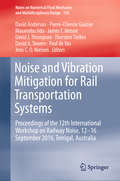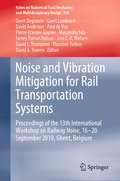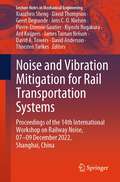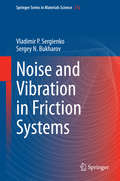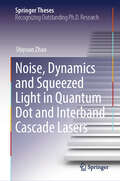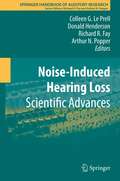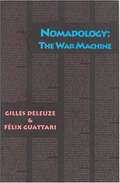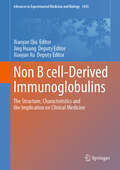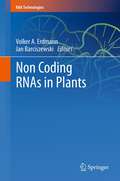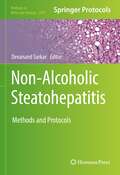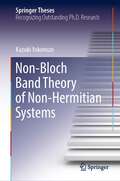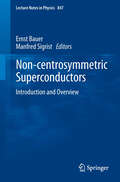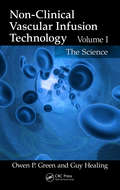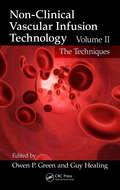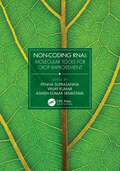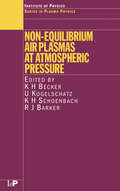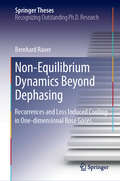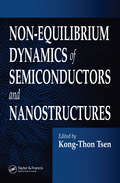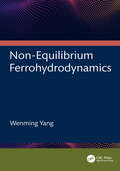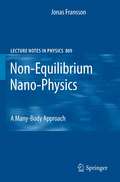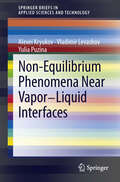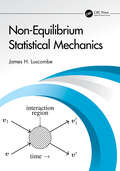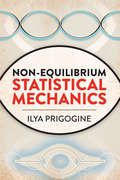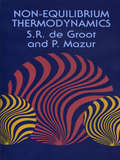- Table View
- List View
Noise and Vibration Mitigation for Rail Transportation Systems: Proceedings Of The 9th International Workshop On Railway Noise, Munich, Germany, 4 - 8 September 2007 (Notes On Numerical Fluid Mechanics And Multidisciplinary Design Ser. #99)
by David Anderson Paul De Vos Pierre-Etienne Gautier Masanobu Iida James T. Nelson David J. Thompson Thorsten Tielkes David A. Towers Jens C. NielsenThis book reports on the 12th International Workshop on Railway Noise held on 12-16 September 2016 at Terrigal, Australia. It gathers peer-reviewed papers describing the latest developments in rail noise and vibration, as well as state-of-the-art reviews by distinguished experts in the field. The papers cover a broad range of rail noise topics including wheel squeal, policy, regulation and perception, wheel and rail noise, predictions, measurements and monitoring, interior noise, rail roughness, corrugation and grinding, high speed rail and aerodynamic noise, and structure-borne noise, ground-borne vibration and resilient track forms. It offers an essential reference-guide to both scientists and engineers in their daily efforts to identify, understand and solve a number of problems related to railway noise and vibration, and to achieve their ultimate goal of reducing the environmental impact of railway systems.
Noise and Vibration Mitigation for Rail Transportation Systems: Proceedings of the 13th International Workshop on Railway Noise, 16-20 September 2019, Ghent, Belgium (Notes on Numerical Fluid Mechanics and Multidisciplinary Design #150)
by David Anderson Paul De Vos Pierre-Etienne Gautier Masanobu Iida David J. Thompson Thorsten Tielkes David A. Towers Jens C. O. Nielsen Geert Degrande Geert Lombaert James Tuman NelsonThis book reports on the 13th International Workshop on Railway Noise (IWRN13), held on September 16-20, 2019, in Ghent, Belgium. It gathers original peer-reviewed papers describing the latest developments in railway noise and vibration, as well as state-of-the-art reviews written by authoritative experts in the field. The different papers cover a broad range of railway noise and vibration topics, such as rolling noise, wheel squeal, noise perception, prediction methods, measurements and monitoring, and vehicle interior noise. Further topics include rail roughness, rail corrugation and grinding, high-speed rail and aerodynamic noise, structure-borne noise, ground-borne noise and vibration, and resilient track forms. Policy, criteria and regulation are also discussed. Offering extensive and timely information to both scientists and engineers, this book will help them in their daily efforts to identify, understand and solve problems related to railway noise and vibration, and to achieve the ultimate goal of reducing the environmental impact of railway systems.
Noise and Vibration Mitigation for Rail Transportation Systems: Proceedings of the 14th International Workshop on Railway Noise, 07–09 December 2022, Shanghai, China (Lecture Notes in Mechanical Engineering)
by David Thompson David Anderson Pierre-Etienne Gautier Thorsten Tielkes David A. Towers Jens C. O. Nielsen Geert Degrande James Tuman Nelson Xiaozhen Sheng Kiyoshi Nagakura Ard KuijpersThis book collects original peer-reviewed papers describing the latest developments in railway noise and vibration from the 14th International Workshop on Railway Noise (IWRN14), held on 7–9 December 2022, in Shanghai, China. It covers a broad range of railway noise and vibration topics, including high-speed rail and aerodynamic noise, wheel and rail noise, curving squeal noise, bridge noise, vehicle interior noise, structure-borne noise, and ground-borne vibration. Further topics such as resilient track forms, wheel out-of-round and polygonalization, rail roughness, corrugation and grinding, etc. are also covered. With the extensive and timely information offered, this book helps scientists and engineers in their daily efforts to identify, understand, and solve problems related to railway noise and vibration and to achieve the ultimate goal of minimizing the environmental impact of railway systems.
Noise and Vibration in Friction Systems
by Vladimir P. Sergienko Sergey N. BukharovThe book analyzes the basic problems of oscillation processes and theoretical aspects of noise and vibration in friction systems. It presents generalized information available in literature data and results of the authors in vibroacoustics of friction joints, including car brakes and transmissions. The authors consider the main approaches to abatement of noise and vibration in non-stationary friction processes. Special attention is paid to materials science aspects, in particular to advanced composite materials used to improve the vibroacoustic characteristics of tribopairs The book is intended for researchers and technicians, students and post-graduates specializing in mechanical engineering, maintenance of machines and transport means, production certification, problems of friction and vibroacoustics.
Noise, Dynamics and Squeezed Light in Quantum Dot and Interband Cascade Lasers (Springer Theses)
by Shiyuan ZhaoThis book provides a comprehensive analysis of quantum-confined semiconductor lasers, focusing on quantum dot lasers (QDLs) and interband quantum cascade lasers (ICLs). Through theoretical and numerical exploration, the author scrutinizes the amplitude and frequency noise spectra, studies the dynamics induced by delayed optical reinjection, and investigates the generation of squeezed states for both laser types. Notably, his predictions align with experimental results, demonstrating the robustness of this approach. Structured meticulously, the book begins with an overview of QDL and ICL technology, followed by in-depth chapters on classical noise and dynamics, and quantum aspects, particularly the generation of squeezed states. Clearly written, the text strikes a balance between words and equations, maintaining accessibility without sacrificing depth. It includes an extensive bibliography, a testament to the thoroughness of the research and a useful feature for all newcomers to the field.
Noise-Induced Hearing Loss
by Arthur N. Popper Richard R. Fay Donald Henderson Colleen G. Le PrellExposure to loud noise continues to be the largest cause of hearing loss in the adult population. The problem of NIHL impacts a number of disciplines. US standards for permissible noise exposure were originally published in 1968 and remain largely unchanged today. Indeed, permissible noise exposure for US personnel is significantly greater than that allowed in numerous other countries, including for example, Canada, China, Brazil, Mexico, and the European Union. However, there have been a number of discoveries and advances that have increased our understanding of the mechanisms of NIHL. These advances have the potential to impact how NIHL can be prevented and how our noise standards can be made more appropriate.
Nomadology: The War Machine
by Gilles Deleuze Felix GuattariIn this daring essay inspired by Nietzsche, Gilles Deleuze and Felix Guattari redefine the relation between the state and its war machine. Far from being a part of the state, warriers (the army) are nomads who always come from the outside and keep threatening the authority of the state. In the same vein, nomadic science keeps infiltrating royal science, undermining its axioms and principles. Nomadology is a speedy, pocket-sized treatise that refuses to be pinned down. Theorizing a dynamic relationship between sedentary power and "schizophrenic lines of flight," this volume is meant to be read in transit, smuggled into urban nightclubs, offices, and subways. Deleuze and Guattari propose a creative and resistant ethics of becoming-imperceptible, strategizing a continuous invention of weapons on the run. An anarchic bricolage of ideas uprooted from anthropology, aesthetics, history, and military strategy, Nomadology carries out Deleuze's desire to "leave philosophy, but to leave it as a philosopher."
Nomic Truth Approximation Revisited (Synthese Library #399)
by Theo A. KuipersThis monograph presents new ideas in nomic truth approximation. It features original and revised papers from a (formal) philosopher of science who has studied the concept for more than 35 years.Over the course of time, the author's initial ideas evolved. He discovered a way to generalize his first theory of nomic truth approximation, viz. by dropping an unnecessarily strong assumption. In particular, he first believed to have to assume that theories were maximally specific in the sense that they did not only exclude certain conceptual possibilities, but also that all non-excluded possibilities were in fact claimed to be nomically possible.Now, he argues that the exclusion claim alone, or for that matter the inclusion claim alone, is sufficient to motivate the formal definition of being closer to the nomic truth. The papers collected here detail this generalized view of nomic truthlikeness or verisimilitude.Besides this, the book presents, in adapted form, the relation with several other topics, such as, domain revision, aesthetic progress, abduction, inference to the best explanation, pragmatic aspects, probabilistic methods, belief revision and epistemological positions, notably constructive realism.Overall, the volume presents profound insight into nomic truth approximation. This idea seeks to determine how one theory can be closer to, or more similar to, the truth about what is nomically, e.g. physically, chemically, biologically, possible than another theory. As a result, it represents the ultimate goal of theory oriented empirical science.Theo Kuipers is the author of Studies in Inductive Probability and Rational Expectation (1978), From Instrumentalism to Constructive Realism (2000) and Structures in Science (2001). He is the volume-editor of the Handbook on General Philosophy of Science (2007).In 2005 there appeared two volumes of Essays in Debate with Theo Kuipers, entitled Confirmation, Empirical Progress, and Truth Approximation and Cognitive Structures in Scientific Inquiry.
Non B cell-Derived Immunoglobulins: The Structure, Characteristics and the Implication on Clinical Medicine (Advances in Experimental Medicine and Biology #1445)
by Jing Huang Xiaoyan Qiu Xiaojun XuThis book has expanded classic concept of immunology. Immunoglobulins have been widely discovered to be produced by many non-B cells. The non B cell-derived Igs display multifunction, which not only includes antibody activities and cellular biological functions under physiological conditions, but also directly participate in the pathological process of malignant tumour and immune-related diseases. This book provides new perspectives and a solid foundation for medical students, basic and clinical scientists to re-understand and broaden the physiological and pathological significance of Ig.
Non Coding RNAs in Plants
by Jan Barciszewski Volker A. ErdmannIn the most recent years, each of the RNA silencing pathways of plants have appeared to generate ncRNAs with dedicated functions, specialized biological activities and specific functional scopes. RNA silencing plays a crucial role in coordinating the expression, stability, protection and inheritance of eukaryotic genomes. It compromises several mechanisms, that invariably depend on core small non coding RNAs and that achieve dedicated sequence-specific functions. RNA silencing has been recognized to carry critical developmental, stress-response and bodyguard functions be coordinating the expression, protection, stability and inheritance of virtually all eukaryotic genomes. Thus, the ncRNAs encompass a wide set of mechanisms that achieve specialized functions.
Non-Alcoholic Steatohepatitis: Methods and Protocols (Methods in Molecular Biology #2455)
by Devanand SarkarThis volume contains a comprehensive collection of laboratory protocols used by researchers to analyze varied aspects of non-alcoholic steatohepatitis (NASH). The chapters in this book cover topics such as methods for histological diagnosis of NASH; the purpose of generating an in vivo NASH model; protocols for isolating hepatocytes and Kupffer cells, bone marrow derived macrophages, and adipocytes; techniques to develop human pluripotent stem cells-derived liver organoids; single-cell and RNA-sequencing; and a description of how to extract exosomes and exosomal miRNAs from mesenchymal stem cells. Written in the highly successful Methods in Molecular Biology series format, chapters include introductions to their respective topics, lists of the necessary materials and reagents, step-by-step, readily reproducible laboratory protocols, and tips on troubleshooting and avoiding known pitfalls. Thorough and practical, Non-Alcoholic Steatohepatitis: Methods and Protocols is a valuable resource for new and experiences investigators studying NASH, and serves as an essential reference on NASH for basic and clinical researchers and students.
Non-Bloch Band Theory of Non-Hermitian Systems (Springer Theses)
by Kazuki YokomizoThis book constructs a non-Bloch band theory and studies physics described by non-Hermitian Hamiltonian in terms of the theory proposed here.In non-Hermitian crystals, the author introduces the non-Bloch band theory which produces an energy spectrum in the limit of a large system size. The energy spectrum is then calculated from a generalized Brillouin zone for a complex Bloch wave number. While a generalized Brillouin zone becomes a unit circle on a complex plane in Hermitian systems, it becomes a circle with cusps in non-Hermitian systems. Such unique features of the generalized Brillouin zone realize remarkable phenomena peculiar in non-Hermitian systems. Further the author reveals rich aspects of non-Hermitian physics in terms of the non-Bloch band theory. First, a topological invariant defined by a generalized Brillouin zone implies the appearance of topological edge states. Second, a topological semimetal phase with exceptional points appears, The topological semimetal phase is unique to non-Hermitian systems because it is caused by the deformation of the generalized Brillouin zone by changes of system parameters. Third, the author reveals a certain relationship between the non-Bloch waves and non-Hermitian topology.
Non-Centrosymmetric Superconductors
by Ernst Bauer Manfred SigristSuperconductivity in materials without inversion symmetry in the respective crystal structures occurs in the presence of antisymmetric spin-orbit coupling as a consequence of an emerging electric field gradient. The superconducting condensate is then a superposition of spin-singlet and spin-triplet Cooper pairs. This scenario accounts for various experimental findings such as nodes in the superconducting gap or extremely large upper critical magnetic fields. Spin-triplet pairing can occur in non-centrosymmetric superconductors in spite of Anderson's theorem that spin-triplet pairing requires a crystal structure that exhibits inversion symmetry. This book, authored and edited by leading researchers in the field, is both an introduction to and overview on this exciting branch of novel superconductors. Its self-contained and tutorial style makes it particularly suitable for self-study and as source of teaching material for special seminars and courses. At the same time it constitutes an up-to-date and authoritative reference for anyone working in this exciting field.
Non-Clinical Vascular Infusion Technology, Volume I: The Science
by Owen P. Green Guy HealingIntravenous infusion is a necessary mode of delivery for many pharmaceuticals currently on the market or undergoing clinical trials. The technique of prolonged intravenous delivery in conscious, free-moving animal models has broadened the opportunity to study and evaluate the safety and efficacy of these therapeutic products. For the first time, th
Non-Clinical Vascular Infusion Technology, Volume II: The Techniques
by Owen P. Green and Guy HealingIntravenous infusion is a necessary mode of delivery for many pharmaceuticals currently on the market or undergoing clinical trials. The technique of prolonged intravenous delivery in conscious, free-moving animal models has broadened the opportunity to study and evaluate the safety and efficacy of these therapeutic products. With contributions fro
Non-Coding RNAs: Molecular Tools for Crop Improvement
by Vinay Kumar Penna Suprasanna Ashish Kumar SrivastavaThis reference book compiles updated research on non-coding RNAs and their role in producing high-yielding plants with higher productivity under changing climates. Plant non-coding RNAs are emerging as the key regulators of plant responses to climate change and environmental stresses. The book covers the sequencing, identification, prediction, identification, characterization, and targets of non-coding RNAs to engineer high-yielding crops. It also includes in silico tools and databases to study them. Key features: Discusses the different types of non-coding RNAs including lnc-RNAs, siRNA, microRNAs, and tasiRNAs. Covers the role of plant non-coding RNAs in epigenetic regulation of environmental stress response and tolerance. Reviews the role of non-coding RNAs under environmental stresses like drought, water logging, salinity, extreme temperature, UV, heavy metals, and xenobiotics. Explores the use of non-coding RNAs in transgenic crops and genome editing. Describes the biogenesis, history, and classification of non-coding RNAs in plants. The book provides a mix of basic and advanced information for postgraduate students, researchers, and scientists in the fields of plant molecular biology, biotechnology, food security, and agriculture.
Non-Equilibrium Air Plasmas at Atmospheric Pressure (Series in Plasma Physics)
by K H Becker U Kogelschatz K H Schoenbach R J BarkerAtmospheric-pressure plasmas continue to attract considerable research interest due to their diverse applications, including high power lasers, opening switches, novel plasma processing applications and sputtering, EM absorbers and reflectors, remediation of gaseous pollutants, excimer lamps, and other noncoherent light sources. Non-Equilibrium Air Plasmas at Atmospheric Pressure reviews recent advances and applications in the generation and maintenance of atmospheric-pressure plasmas. With contributions from leading international researchers, the coverage includes advances in atmospheric-pressure plasma source development, diagnostics and characterization, air plasma chemistry, modeling and computational techniques, and an assessment of the status and prospects of atmospheric-pressure air plasma applications. The extensive applications sections make this book attractive for practitioners in many fields where technologies based on atmospheric-pressure air plasmas are emerging.
Non-Equilibrium Dynamics Beyond Dephasing: Recurrences and Loss Induced Cooling in One-dimensional Bose Gases (Springer Theses)
by Bernhard RauerCold atomic gases trapped and manipulated on atom chips allow the realization of seminal one-dimensional (1d) quantum many-body problems in an isolated and well controlled environment. In this context, this thesis presents an extensive experimental study of non-equilibrium dynamics in 1d Bose gases, with a focus on processes that go beyond simple dephasing dynamics. It reports on the observation of recurrences of coherence in the post-quench dynamics of a pair of 1d Bose gases and presents a detailed study of their decay. The latter represents the first observation of phonon-phonon scattering in these systems. Furthermore, the thesis investigates a novel cooling mechanism occurring in Bose gases subjected to a uniform loss of particles. Together, the results presented show a wide range of non-equilibrium phenomena occurring in 1d Bose gases and establish them as an ideal testbed for many-body physics beyond equilibrium.
Non-Equilibrium Dynamics of Semiconductors and Nanostructures
by Kong-Thon TsenThe advent of the femto-second laser has enabled us to observe phenomena at the atomic timescale. One area to reap enormous benefits from this ability is ultrafast dynamics. Collecting the works of leading experts from around the globe, Non-Equilibrium Dynamics of Semiconductors and Nanostructures surveys recent developments in a variety of areas in ultrafast dynamics.In eight authoritative chapters illustrated by more than 150 figures, this book spans a broad range of new techniques and advances. It begins with a review of spin dynamics in a high-mobility two-dimensional electron gas, followed by the generation, propagation, and nonlinear properties of high-amplitude, ultrashort strain solitons in solids. The discussion then turns to nonlinear optical properties of nanoscale artificial dielectrics, optical properties of GaN self-assembled quantum dots, and optical studies of carrier dynamics and non-equilibrium optical phonons in nitride-based semiconductors. Rounding out the presentation, the book examines ultrafast non-equilibrium electron dynamics in metal nanoparticles, monochromatic acoustic phonons in GaAs, and electromagnetically induced transparency in semiconductor quantum wells.With its pedagogical approach and practical, up-to-date coverage, Non-Equilibrium Dynamics of Semiconductors and Nanostructures allows you to easily put the material into practice, whether you are a seasoned researcher or new to the field.
Non-Equilibrium Ferrohydrodynamics
by Wenming YangFerrofluids, a synthetic intelligent liquid material, exhibit fascinating flow phenomena when subjected to magnetic fields. This book systematically examines the fundamentals, applications, mathematical derivations, and properties of non-equilibrium ferrohydrodynamics and explores the magnetization and viscosity properties of ferrofluids.The book begins with an introduction to the basic concepts and applications of non-equilibrium ferrohydrodynamics and transport theory. It then goes on to discuss the equations of non-equilibrium and quasi-equilibrium ferrohydrodynamics and the magnetic levitation force in ferrofluids. The author discusses two crucial properties of ferrofluids: magnetization properties and viscosity properties, presenting the ferrofluid magnetization equations and the magnetoviscous effect, an important physical manifestation of non-equilibrium theory. Different types of flows of ferrofluids under the application of different magnetic field configurations are also elucidated, illustrating specific manifestations of non-equilibrium ferrohydrodynamics in different flow patterns.This book will be a valuable reference for researchers and students of mechanical engineering with an interest in fluid dynamics, computational mechanics, and electromagnetism. Professionals working in areas of ferrofluid applications such as mechanics, petrochemical engineering, environmental sciences, and biomedicine will also benefit.
Non-Equilibrium Nano-Physics: A Many-Body Approach
by Jonas FranssonThe aim of this book is to present a formulation of the non-equilibrium physics in nanoscale systems in terms of many-body states and operators and, in addition, discuss a diagrammatic approach to Green functions expressed by many-body states. The intention is not to give an account of strongly correlated systems as such. Thus, the focus of this book ensues from the typical questions that arise when addressing nanoscale systems from a practical point of view, e.g. current-voltage asymmetries, negative differential conductance, spin-dependent tunneling. The focus is on nanoscale systems constituted of complexes of subsystems interacting with one another, under non-equilibrium conditions, in which the local properties of the subsystems are preferably being described in terms of its (many-body) eigenstates.
Non-Equilibrium Phenomena near Vapor-Liquid Interfaces
by Yulia Puzina Alexei Kryukov Vladimir LevashovThis book presents information on the development of a non-equilibrium approach to the study of heat and mass transfer problems using vapor-liquid interfaces, and demonstrates its application to a broad range of problems. In the process, the following peculiarities become apparent: 1. At vapor condensation on the interface from gas-vapor mixture, non-condensable components can lock up the interface surface and condensation stops completely. 2. At the evolution of vapor film on the heater in superfluid helium (He-II), the boiling mass flux density from the vapor-liquid interface is effectively zero at the macroscopic scale. 3. In problems concerning the motion of He-II bridges inside capillaries filled by vapor, in the presence of axial heat flux the He-II bridge cannot move from the heater as would a traditional liquid, but in the opposite direction instead. Thus the heater attracts the superfluid helium bridge. 4. The shape of liquid-vapor interface at film boiling on the axis-symmetric heaters immersed in liquid greatly depends on heat flux in the interface. Thus a new type of hydrostatic problems appears when in contrast to traditional statements the shape of the liquid-vapor interface has a complex profile with a point of inflection and a smooth exit on a free liquid surface.
Non-Equilibrium Statistical Mechanics
by James H. LuscombeStatistical mechanics provides a framework for relating the properties of macroscopic systems (large collections of atoms, such as in a solid) to the microscopic properties of its parts. However, what happens when macroscopic systems are not in thermal equilibrium, where time is not only a relevant variable, but also essential?That is the province of nonequilibrium statistical mechanics – there are many ways for systems to be out of equilibrium! The subject is governed by fewer general principles than equilibrium statistical mechanics and consists of a number of different approaches for describing nonequilibrium systems.Financial markets are analyzed using methods of nonequilibrium statistical physics, such as the Fokker-Planck equation. Any system of sufficient complexity can be analyzed using the methods of nonequilibrium statistical mechanics. The Boltzmann equation is used frequently in the analysis of systems out of thermal equilibrium, from electron transport in semiconductors to modeling the early Universe following the Big Bang.This book provides an accessible yet very thorough introduction to nonequilibrium statistical mechanics, building on the author's years of teaching experience. Covering a broad range of advanced, extension topics, it can be used to support advanced courses on statistical mechanics, or as a supplementary text for core courses in this field.Key Features: Features a clear, accessible writing style which enables the author to take a sophisticated approach to the subject, but in a way that is suitable for advanced undergraduate students and above Presents foundations of probability theory and stochastic processes and treats principles and basic methods of kinetic theory and time correlation functions Accompanied by separate volumes on thermodynamics and equilibrium statistical mechanics, which can be used in conjunction with this book
Non-Equilibrium Statistical Mechanics (Dover Books On Physics Series)
by Ilya PrigogineIlya Prigogine won the 1977 Nobel Prize in Chemistry for his contributions to non-equilibrium thermodynamics. This groundbreaking 1962 monograph, written for researchers and graduate students in this field, was his first book-length contribution to this subject. Suitable for advanced undergraduates and graduate students in physics and chemistry, the treatment begins with examinations of the Liouville equation, anharmonic solids, and Brownian motion. Subsequent chapters explore weakly coupled gases, scattering theory and short-range forces, distribution functions and their diagrammatic representation, the time dependence of diagrams, the approach to equilibrium in ionized gases, and statistical hydrodynamics. Additional topics include general kinetic equations, general H-theorem, quantum mechanics, and irreversibility and invariants of motion. Appendices, a bibliography, list of symbols, and an index conclude the text.
Non-Equilibrium Thermodynamics
by P. Mazur S. R. GrootThe study of thermodynamics is especially timely today, as its concepts are being applied to problems in biology, biochemistry, electrochemistry, and engineering. This book treats irreversible processes and phenomena -- non-equilibrium thermodynamics.S. R. de Groot and P. Mazur, Professors of Theoretical Physics, present a comprehensive and insightful survey of the foundations of the field, providing the only complete discussion of the fluctuating linear theory of irreversible thermodynamics. The application covers a wide range of topics: the theory of diffusion and heat conduction, fluid dynamics, relaxation phenomena, acoustical relaxation, and the behavior of systems in an electromagnetic field.The statistical foundations of non-equilibrium thermodynamics are treated in detail, and there are special sections on fluctuation theory, the theory of stochastic processes, the kinetic theory of gases, and the derivation of the Onsager reciprocal relations. The implications of causality conditions and of dispersion relations are analyzed in depth.Advanced students will find a great number of challenging problems, with hints for their solutions. Chemists will be especially interested in the applications to electrochemistry and the theory of chemical reactions. Physicists, teachers, scholars, biologists, and anyone interested in the principle and modern applications of non-equilibrium thermodynamics will find this classic monograph an invaluable reference.
